Final Report
Dates and location
26 August — 28 August 2025, Metz, France
Chairperson
Dr. Stéphane Berbenni, Laboratoire d'Études des Microstructures et de Mécanique des Matériaux (LEM3, Université de Lorraine, CNRS, Arts et Métiers), Metz, France
Co-chairperson
Dr. Katarzyna Kowalczyk-Gajewska, Institute of Fundamental Technological Research, Warsaw, Poland Dr. Remi Dingreville, Center for Integrated Nanotechnologies (Sandia Nat. Labs) Albuquerque, USA
Conference fees
- Registration fees Senior - early bird [excluding VAT - Lunch included]: 480.00 €
- Registration fees Senior: 580.00 €
- PhD Student Registration fees - early bird [excluding VAT - Lunche included]: 300.00 €
- PhD student Registration fee: 330.00 €
What other funding was obtained?
Other funding joined with CFM2025 (French Congress Mechanics)
What were the participants offered?
Four lunches, Daily coffee breaks, Welcome Cocktail at the Convention Center, Altogether dinner at the Restaurant El-Theatris in Metz, Conference Gala Dinner at the Saint-Symphorien stadium (shared with the CFM 2025, Optional)
Applicants (members)
- Stephane Berbenni
- Remi Dingreville
- Samuel Forest
- Frederik Hille
- Ralf Jänicke
- Claudius Klein
- Mohsen Rezaee Hajidehi
Applicants (non members)
- Luis Barrales-Mora
- Thomas Böhlke
- Thomas Böhlke
- Paolo Botticini
- Brad Boyce
- Laurent Capolungo
- Nicolas Combe
- Patrick Cordier
- Arthur Després
- Emilie Fargant
- Xavier Feaugas
- Hélène Fesselet
- Michael Fischlschweiger
- Julien Guénolé
- Nour Habib
- Samuel Hemery
- Johan Hoefnagels
- Hosni Idrissi
- Carl Krill
- Wojciech Kulozik
- Nicolas Lallemand
- Delannay Laurent
- Ricardo Lebensohn
- Pablo López Gavilán
- Douglas Medlin
- Amit Misra
- Dan Mordehai
- Christian Motz
- Joé Petrazoller
- Henry Proudhon
- Joao Quinta Da Fonseca
- Yiming Ren
- Marco Salvalaglio
- Jean-Charles Stinville
- Maciej Szczerba
- Damien Texier
- Miroslav Zecevic
- Charaf-Eddine Ziouani
Scientific report
Interfaces such as grain boundaries in polycrystalline as well as heterointerfaces in multiphase materials are ubiquitous in mechanics of materials with wide-ranging properties and applications. Therefore, understanding the role and the benefit of interfaces is key in optimization of metals, alloys, ceramics and composites for a wide range of applications including electrochemical energy conversion and storage, optical, magnetic, themomechanical, environmental applications.
This Euromech colloquium 653 aimed at gathering scientists from all horizons (mechanical sciences, material sciences, physics) in order to present their recent developments and results in the field of mechanics of interfaces. The main goal of the colloquium was to probe the “state of the art” in this important field of solid/materials mechanics.
For this Euromech 653 colloquium, there were 45 participants and 35 presentations. We were pleased to welcome 30 Keynote lecturers and 5 Presenters (PhD students).
The scientific program is given in the web site as a separate document. Most importantly, there was ample time for informal discussions among the participants during coffee breaks, lunches and social program, see the Euromech colloquium 653 website: https://653.euromech.org/
The program of the Colloquium contained the following thematic sessions:
- Grain boundary motion (during 1st day)
- Interface structures and properties (during 1st day)
- Deformation mechanisms at interfaces (during 2nd day)
- Damage and failure mechanisms at interfaces (during 2nd day)
- Multiscale and Multiphysics approaches to Interface Behavior (during 3rd day)
- Heterogeneous interfaces and polycrystalline plasticity (during 3rd day)
During the colloquium, the specific addressed talks included the following results and discussions:
- Grain boundary motion (1st day, 5 talks)
In the 1st day presentations during the colloquium, it was shown that grain boundary migration is fundamentally mediated by the motion of line defects, known as disconnections, which propagate along the GBs and possess both step and dislocation characters. First, a bicrystallography-consistent continuum model was presented and applied to GB faceting and grain rotation. It was also shown that internal stresses generated by disconnection flow (shear coupling) induce significant deviations from classical curvature-driven grain growth.
During the colloquium, it was shown that atomistic simulations (Molecular dynamics, Nudge Elastic band methos) are also important numerical methods to investigate GB migration.
Mechanical stresses and jump in chemical potential were used to drive the motion of GBs. Using MD simulations of GB migration, persistent homology (PH) was utilized to quantify the structure of GBs during their migration and to discriminate the type of migration of a boundary.
In another presentation, a new concept based on the plastic displacement as a collective variable was reported to compute the free energy barrier for shear coupled grain boundary migration mechanism at different temperatures.
Experimental progresses were also presented during the colloquium regarding:
Abnormal grain growth derived from time-resolved diffraction-contrast tomography (DCT) reconstructions, with microstructural analysis enhanced by a convolutional neural network (CNN) utilized to infer local GB mobilities directly from sequential pairs of grain maps.
Grain boundary migration under high-cycle fatigue conditions where solute segregation to disconnections can reduce the mobility of defects as minor additions of Au to Pt show substantial enhancements in fatigue resistance.
- Interface structures and properties (1st day, 7 talks)
The role of grain boundary structure was also explored during the first day of the colloquium and different dislocation models were discussed for interfaces.
From both electron microscopic observations and atomistic simulations of face-centered-cubic (fcc) grain boundaries and their defects, it was first shown that grain-boundary facets are well described as dense arrays of Shockley partial dislocations. Grain boundary facet junctions constrain the sequence of dislocations that can allow for motion of the junctions through coordinated conservative glide.
It was shown in another presentation that high-angle grain boundaries (HAGBs) are the preferred sites for amorphization in contrast with low-angle grain boundaries. Amorphized GBs are then subject to sliding and the resulting constitutive equation of such a sliding boundary has been determined. From quantitative in situ TEM tensile testing, it was demonstrated that stress-induced amorphization can be activated under high stresses at room temperature in small-sized olivine bi-crystals.
Micromechanical modelling and atomistic simulations of solute atom segregation towards low angle grain boundaries modeled with arrays of edge dislocations were also shown and discussed in terms of elastic dipole tensor and interaction energies.
Using a finite element model, it was reported that the sizes and the irregular shapes of grains influence the relative contributions of grain boundary diffusion and grain boundary sliding to the average viscoplastic deformation of the polycrystalline aggregate. Grain rotations were found to depend both on the heterogeneity of grain shapes, and on the microscopic viscous shear stress opposing grain boundary sliding.
A novel atomistic-to-continuum crossover scheme based on static dislocation mechanics (FDM) was presented in a talk to explore dislocation density fields at interfaces and interactions between dislocations and GBs.
In another contribution using atomistic simulations and continuum-based dislocation-disclination mechanics, it was shown that segregation patterns are associated to the breaking of local symmetry caused by the dislocation content at the step region of the disconnection.
Finally, the development of new architectured bi-lattice materials was presented using numerical and experimental methods. They were inspired by analogues from bi-crystallography based on Coincident Site Lattice GBs (in face-centered cubic structures).
- Deformation mechanisms at interfaces (2nd day, 7 talks)
The second day started with talks about the experimental study of deformation mechanisms at interfaces. Using electron miscroscopy, dislocation-interface interactions were reported in nanoscale eutectics. The shown results suggest that microstructural heterogeneity at nanoscales enhances flow strength, strain hardening and homogeneity of plastic flow in laser processed eutectic alloys.
A combination of ’1D’, ’2D’ and ’3D’ experiments and advanced crystal plasticity simulations were presented to study deformation mechanisms that trigger or prevent damage initiation in Dual Phase steels containing martensite interfaces. It was shown that strong anisotropic martensite plasticity occurs in dual-phase steels and that the softer martensite plasticity mechanism that occurs over the habit plane inhibits damage initiation in martensite.
In another presentation, an in-situ study of a coarse grain magnesium alloy deformed at moderate temperatures and low strain rates was shown. It was discovered that grain boundary shearing coupled with grain boundary migration is the dominant deformation mechanism, and enables the homogeneous deformation of the material, explaining the increase in ductility in this regime.
In other contributions, the role of deformation twins was thoroughly studied, as they play a key role in accommodating strain during plastic deformation in metals and their alloys. First, in hexagonal close-packed (hcp) metals like Ti, the full 3D character of deformation twins and their associated networks were characterized using 3D EBSD and a convolutional neural network. It was used to correlate twin transmission mechanisms to local stress and maximum dissipation.
Temperature dependence of the detwinning stress of deformation twins in face-centered cubic (fcc) metallic materials was shown studying the effect of elevated temperatures on plastic deformation properties of multilayered twin/matrix structure of the Cu-8at.%Al alloy.
Using a 2D crystal plasticity finite element model with slip and twin modes, the role of matrix-twin interfaces in the void growth in HCP crystals (AZ31B Mg alloy) was investigated. It was shown from these numerical simulations that matrix-twin interfaces have an impact on the void growth.
In another talk, the elastic strain measurements at particle-matrix interfaces and at dislocations pile ups were reported using a novel experimental method with TEM. The measured elastic fields were compared to theoretical dislocation model predictions and good matches were reported.
- Damage and failure mechanisms at interfaces (2nd day, 6 talks)
Nanolaminate systems with nanometer-scale layers have been sufficiently studied and optimized to reach unique combinations of outstanding properties including ultra-high strength and plastic deformability, thermal stability, shock resistance, and high resistance to ion-irradiation-induced damage.
In the colloquium, a first contribution studied the Al/a-Al2O3 NL system, which exhibits superior toughness, strength and ductility, where the transmission of plasticity at crystal/amorphous interface was discussed.
Fracture of interfaces for Printed Circuit Boards (PCB) application was studied in another talk with experimental characterization and numerical simulations estimating the critical strain energy release rates in Mode I and Mode II (GIc and GIIc) and the corresponding critical stress.
A contribution highlighted the role of grain boundary damage in directionally solidified nickel-base superalloys using a constitutive model combining single crystal viscoplasticity inside the grains and a specific damage behaviour law that includes normal and tangential damage in a diffuse region around grain boundaries parametrized by a phase field variable.
In polycrystalline metallic nanowires, it was shown that Longitudinal Twin Boundaries (LTB) have an impact on the distribution of failure strains. Molecular dynamics (MD) simulations were investigated to study the role of longitudinal twin boundaries (LTBs) in the plasticity and ductility of bicrystalline gold (Au) nanowires and penta-twinned silver (Ag) nanowires.
In an experimental contribution, HR-DIC analysis and out-of-plane measurements using laser scanning confocal microscopy were performed to quantify plasticity distribution and preferential cracking site at the microstructure scale to study the effect of strain rate and grain size on the oxidation-assisted intergranular cracking of the Ni-based superalloy Alloy 718 (Inconel 718) at 650 °C.
Another experimental contribution highlighted crack nucleation at basal twist grain boundaries (BTGBs) in near-α and α+β titanium alloys. Quantitative characterization of deformation at a selection of BTGBs was then performed in-situ using in-SEM tensile tests combined with high resolution digital image correlation.
- Multiscale and Multiphysics approaches to Interface Behavior (3rd day, 3 talks)
In this session about multiscale approaches of interfaces, a first talk focused on the modeling of adsorption isotherms for two examples using the chemical engineering point of view. The first example was the adsorption of small gases on active carbons or zeolites and the second example was the separation of isomers. It appeared that the modeling of the solid surface is the bottleneck for this approach. Therefore, possible cooperation with the mechanical engineering community has been discussed.
Another contribution about multiscale approaches of interfaces showed an imperfect interface mechanical model using asymptotic analysis and developed in the context of strain-gradient elasticity. The general imperfect interface model contains different ingredients: the displacement vector jump relation, the traction vector jump relation, the normal displacement gradient jump relation, the double traction vector jump relation.
A talk about the mutiphysics of interfaces focused on the understanding of hydrogen implication on intergranular fracture in nickel-based alloys in relation to the nature and distribution of grain boundaries. Numerous results were shown about trapping of hydrogen on vacancies, dislocations, precipitates, and grain boundaries. The influence of hydrogen on elasticity and the short- and long-range interactions between dislocations were shown to discuss the antagonistic hardening/softening effects in these alloys.
- Heterogeneous interfaces and polycrystalline plasticity (3rd day, 7 talks)
In this session, two successive talks were dedicated to the modeling of interfaces and interfacial conditions within the numerical Fast Fourier Transform (FFT)-based method. Recent progresses on FFT-based polycrystal plasticity were presented, with emphasis in novel implementations, including strain-gradient plasticity, achieving geometric accuracy working with voxelized images, non-periodic extensions, and dynamic effects. The role of interfaces in plasticity, interactions between interfaces and waves in elastically heterogeneous materials, multiscale coupling with Lagrangian hydrocodes, and integration with 3-D characterization methods were presented.
New grain boundary equations were proposed and implemented in the strain gradient FFT-based formulation. They allowed full suppression of dislocation flow at the grain boundary with the increase of the boundary resistance, and thus larger dislocation pile-ups in better agreement with experiments.
In another talk, a size-dependent homogenization scheme for gradient plasticity in periodic laminates was developed for metallic material systems with lamellar microstructures. Within the framework of gradient crystal plasticity, the yield conditions take the form of a system of coupled Fredholm integro-differential equations for the plastic slip, which was solved semi-analytically under consideration of the loading-unloading conditions.
A mean field modeling including mobile interface was reported with the possibility of considering interfacial energy. Selected examples of interfaces in fluids and solids were discussed. It was shown how interfacial energy can influence the effective properties, then the consideration of interfacial energy in the modeling of phase transitions and the associated mechanical and thermal properties were discussed.
In another contribution, a gradient-enhanced model of superelasticity was shown to validate experimental observations about size-dependent patterns of propagating instabilities in shape memory alloy tubes. The understanding of size-dependent transformation front patterning was based on the competition between the interfacial energy of the front and the elastic strain energy stored in the tube.
A presentation was made about encoding polycrystalline metal plasticity from high-resolution digital image correlation (HR-DIC) during elementary loading conditions to predict monotonic and cyclic macroscopic properties in metallic materials. Simultaneously, microstructure information is captured from diffraction data. The role of interfaces on mechanical behavior was investigated with these new advanced experimental techniques.
Another contribution was about correlative diffraction microscopy imaging experiments to investigate crystal plasticity mechanisms and their interaction with the grain boundary network in polycrystals. Results were shown from different characterization methods (EBSD, HR-DIC, lab or synchrotron based) DCT and Topotomography) at different stage of tensile deformation.
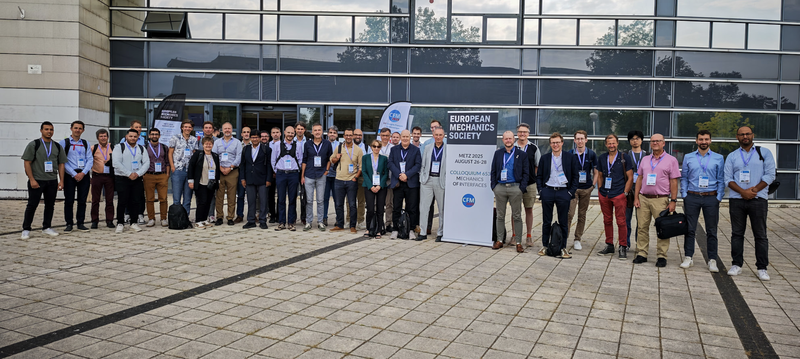
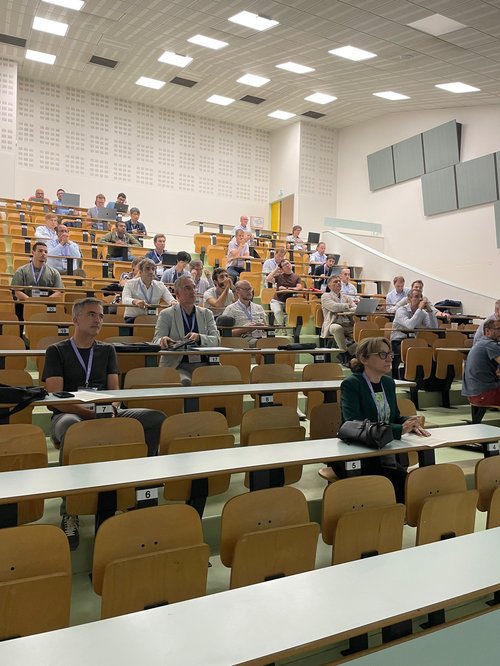
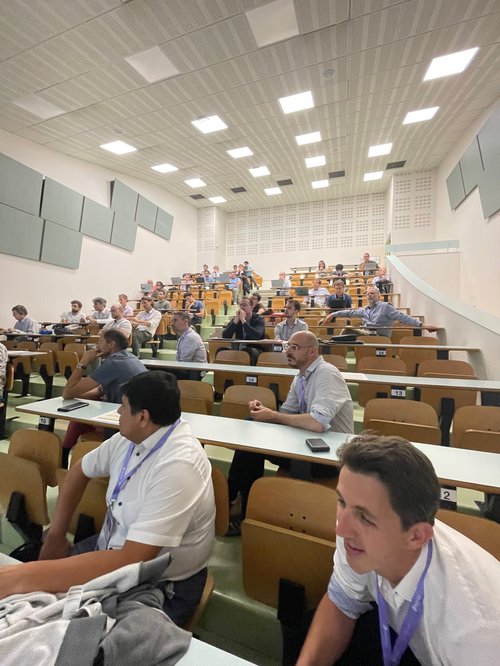
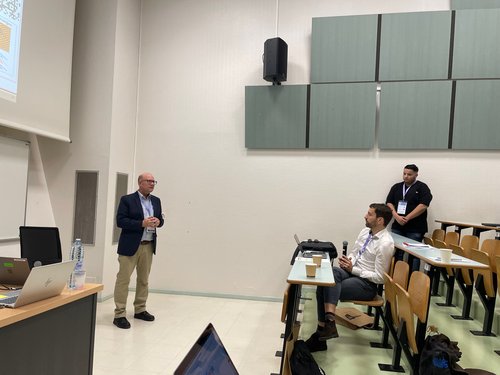
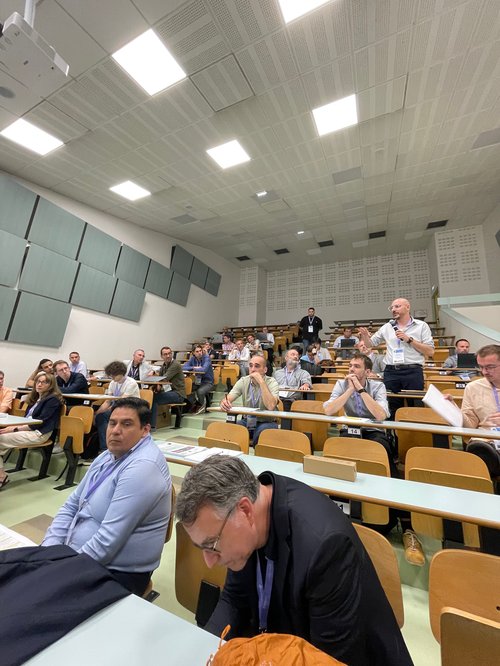
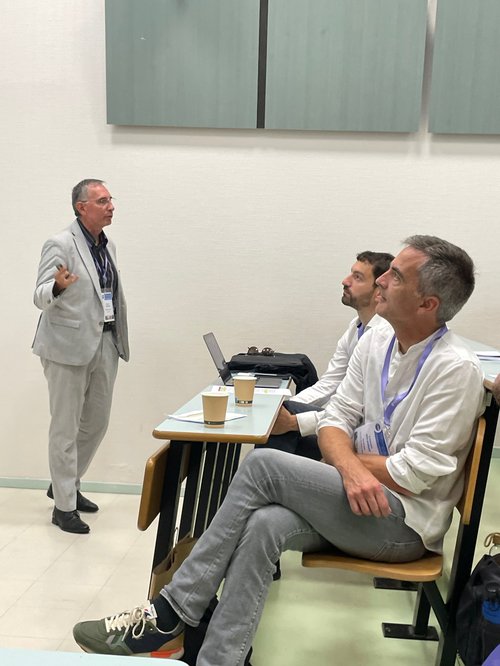
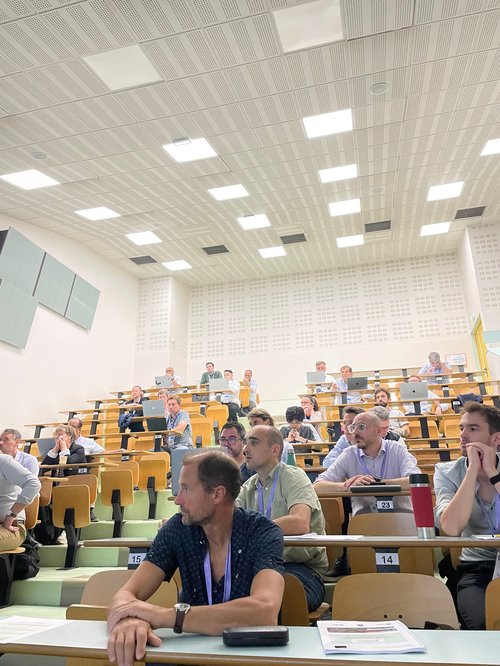
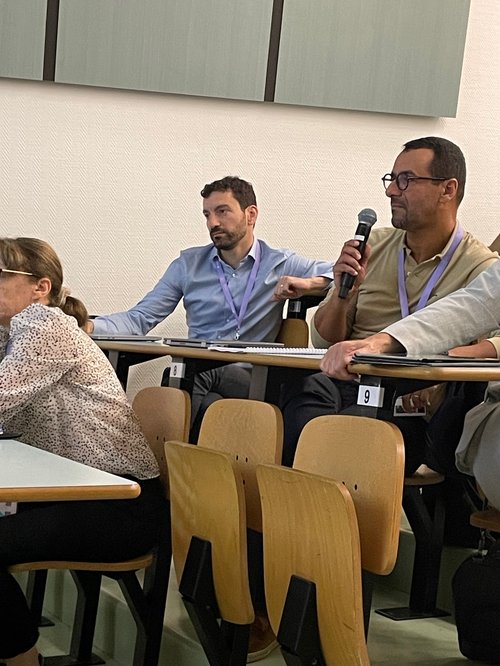
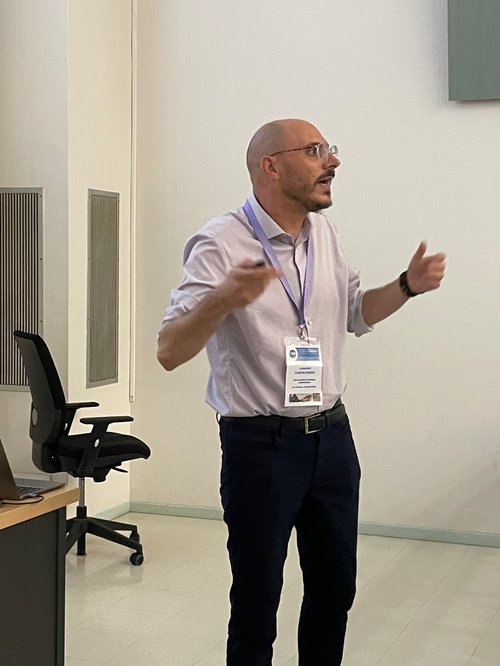
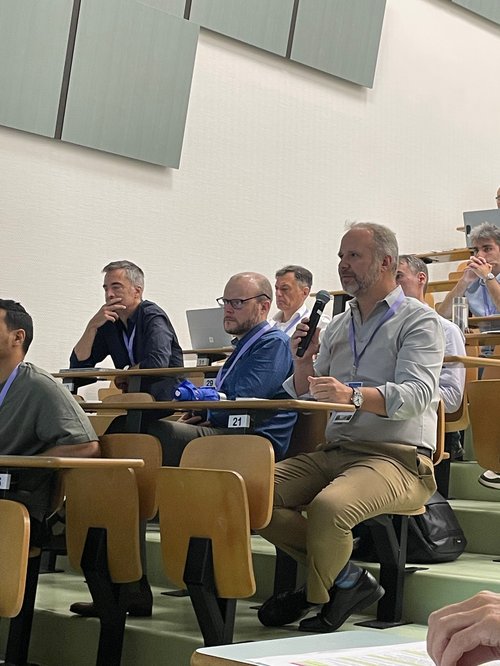
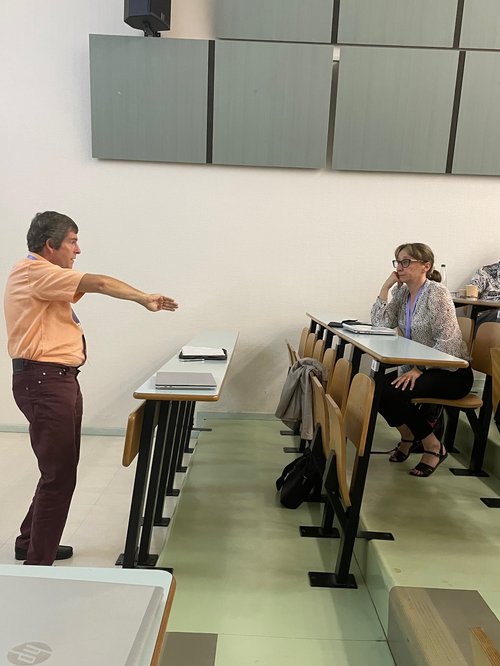
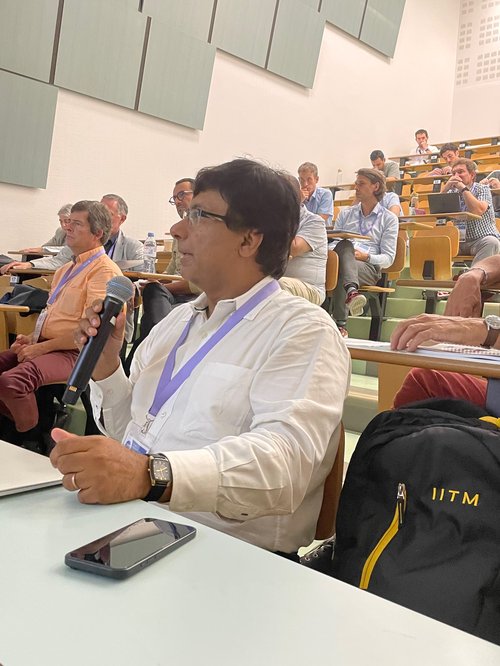
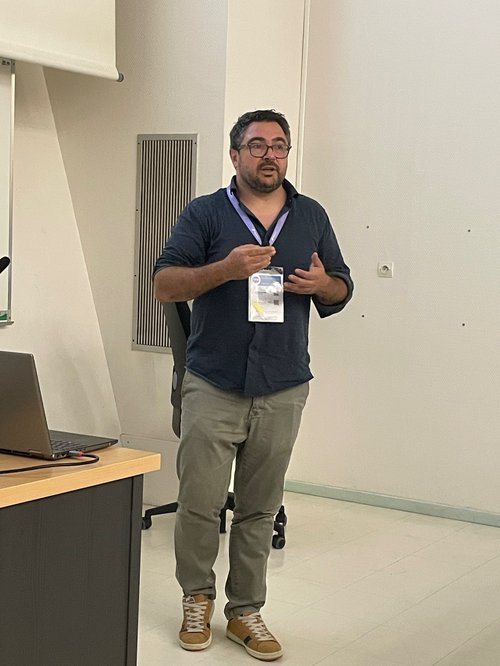
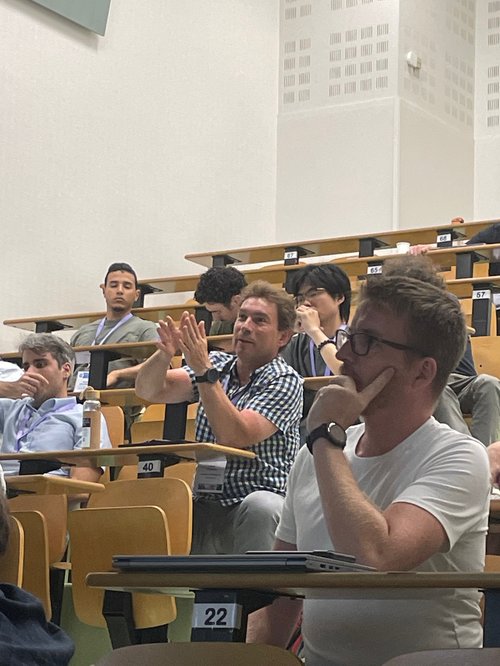
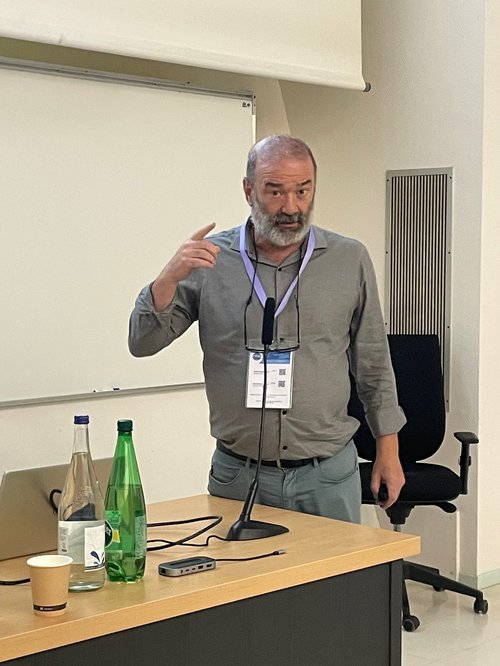
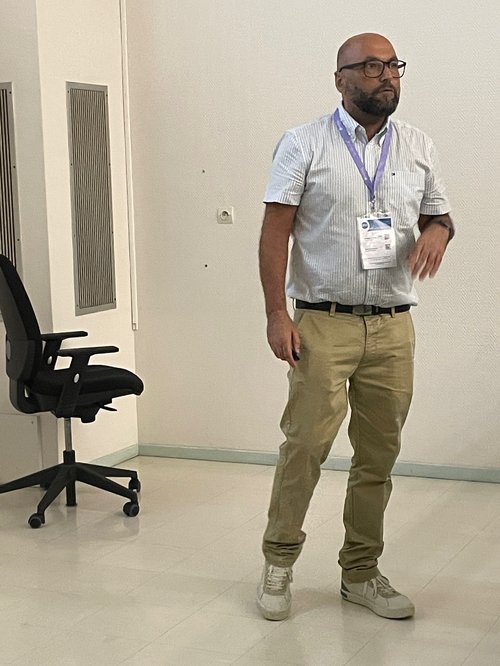
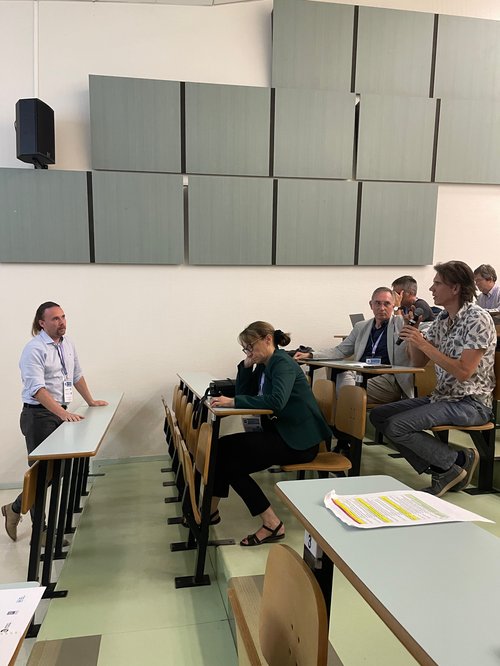
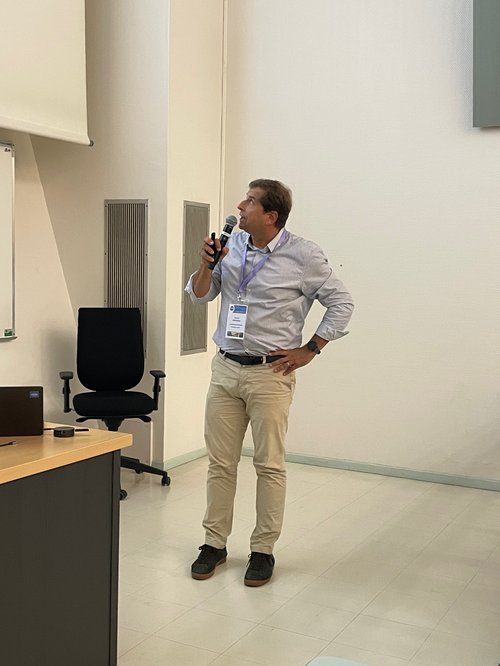
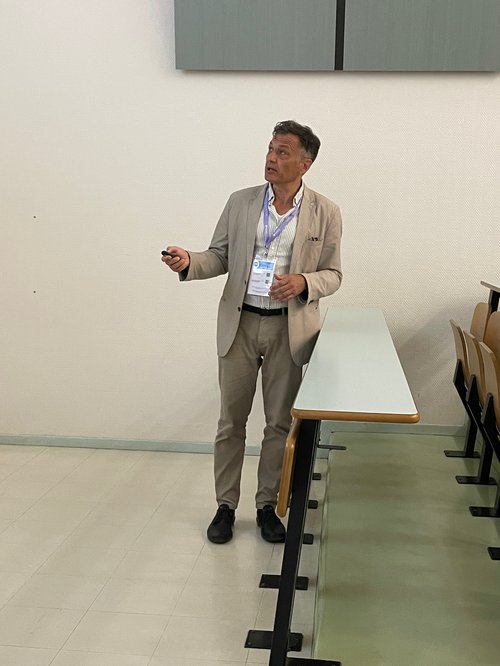
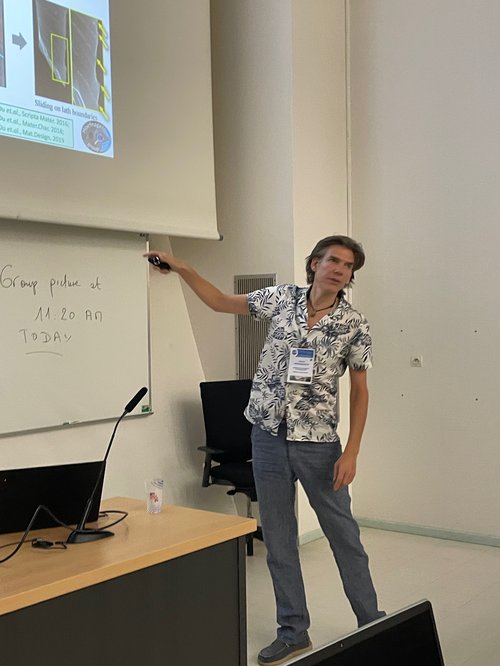
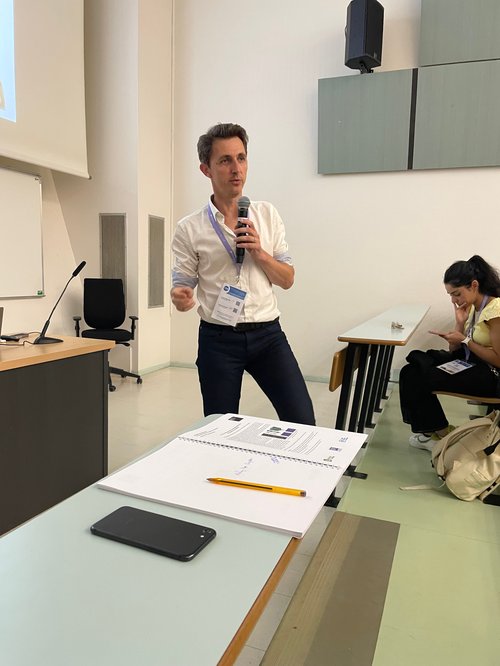
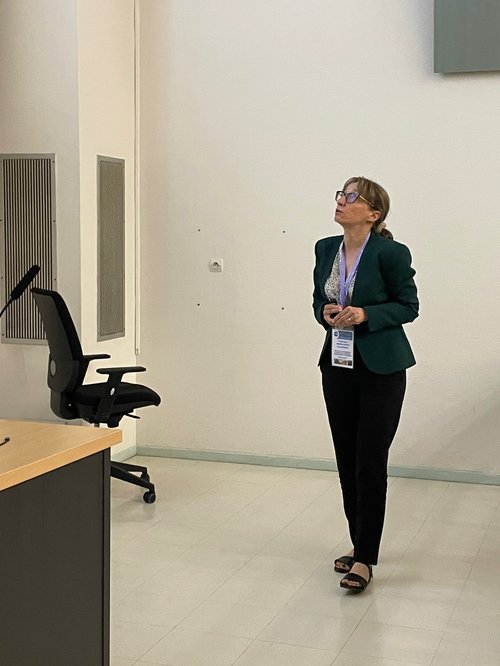
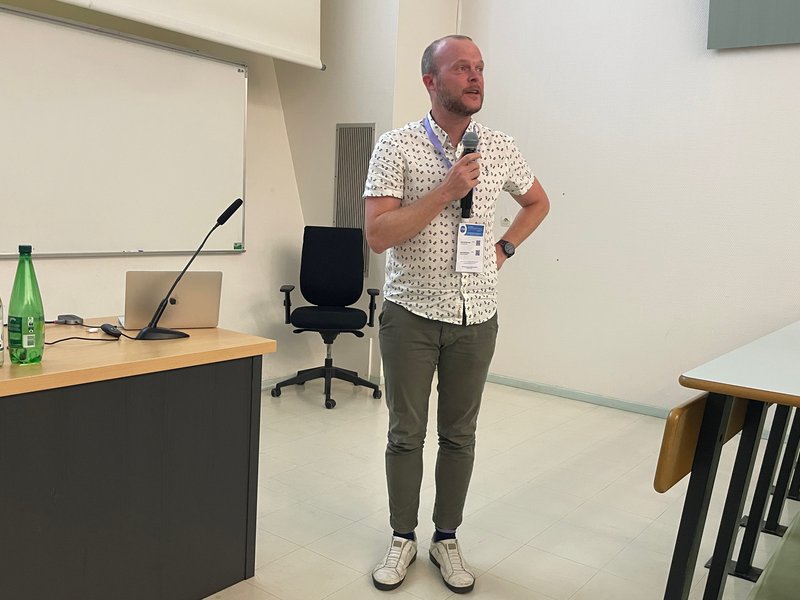
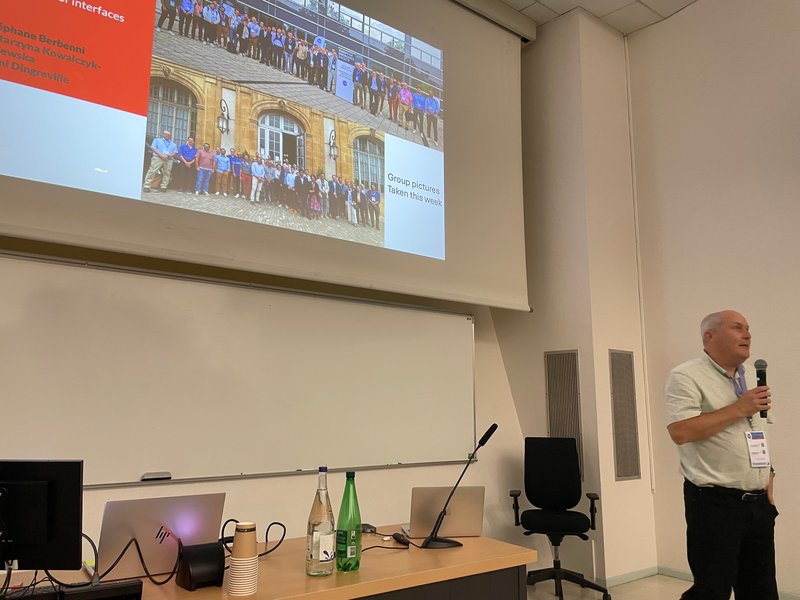
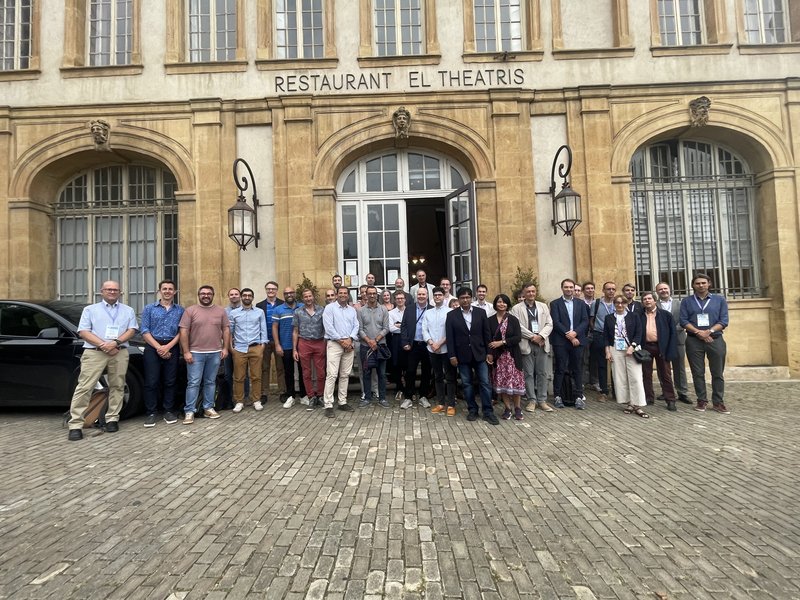
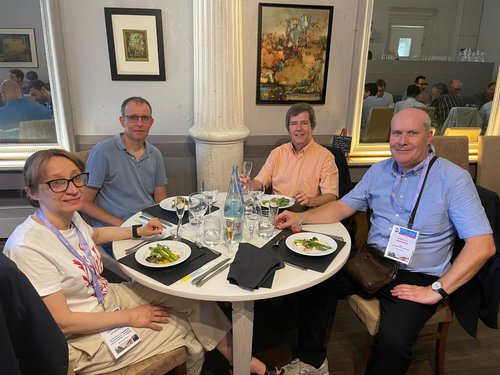
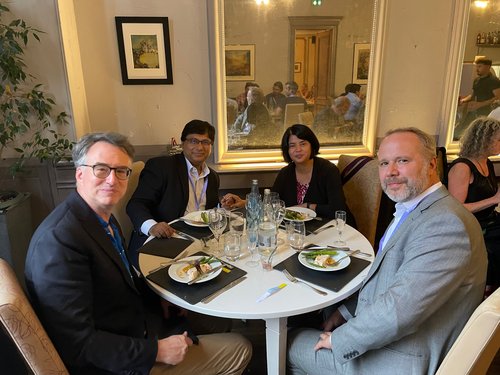
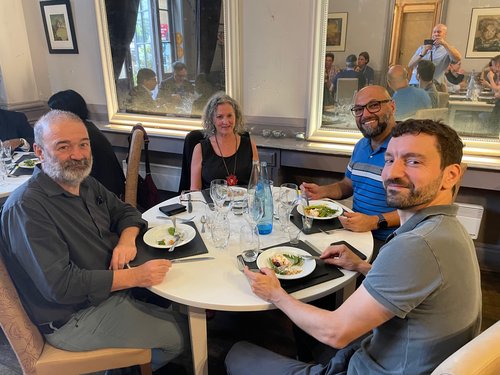
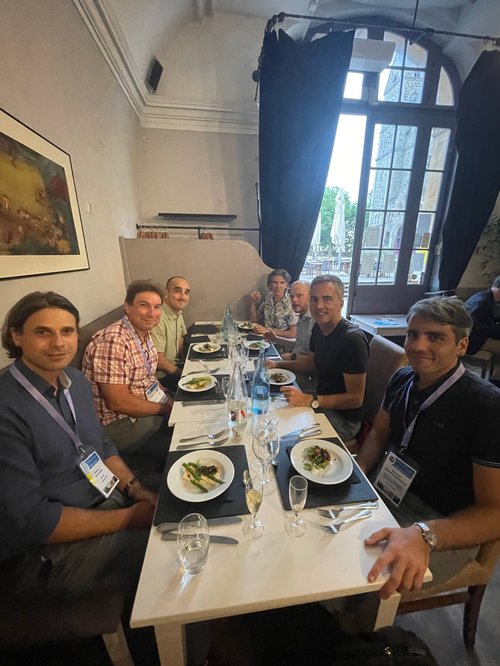
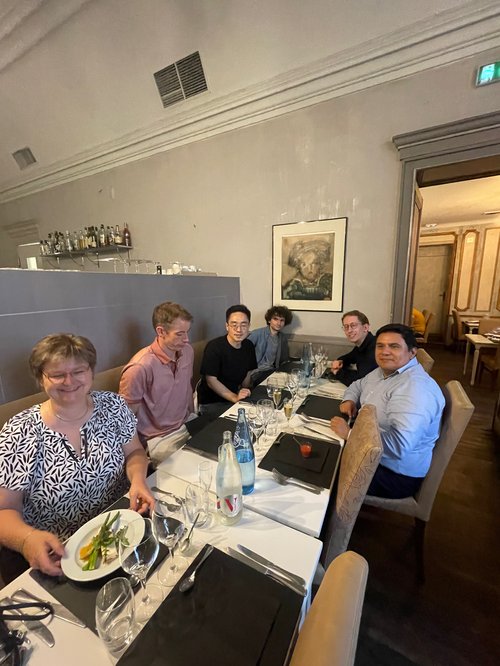
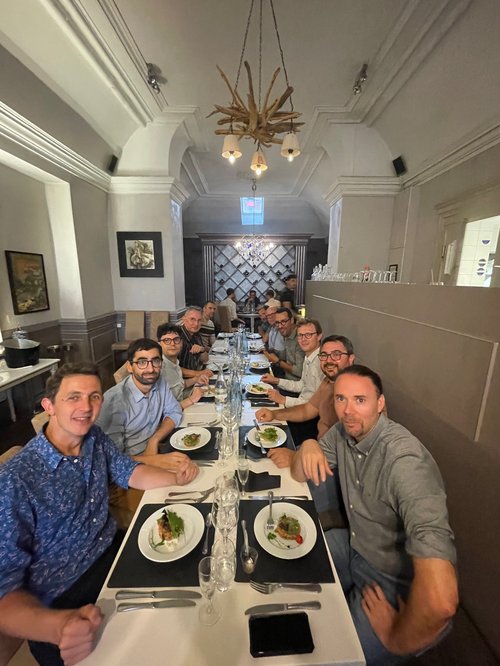
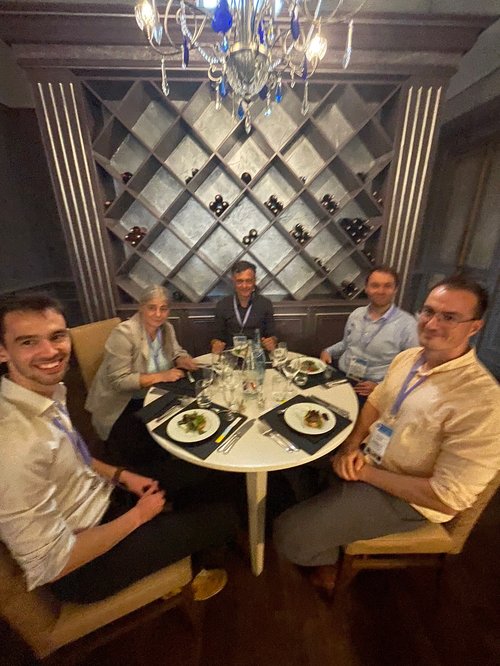
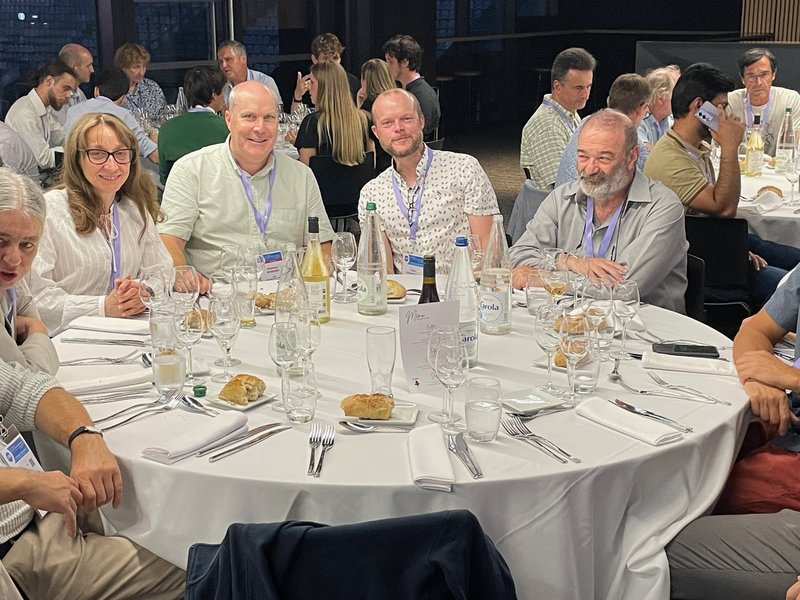
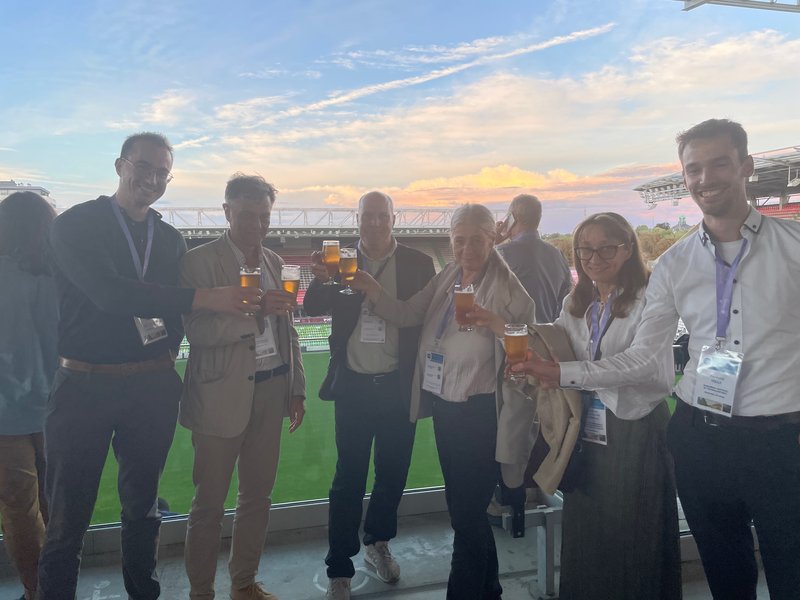
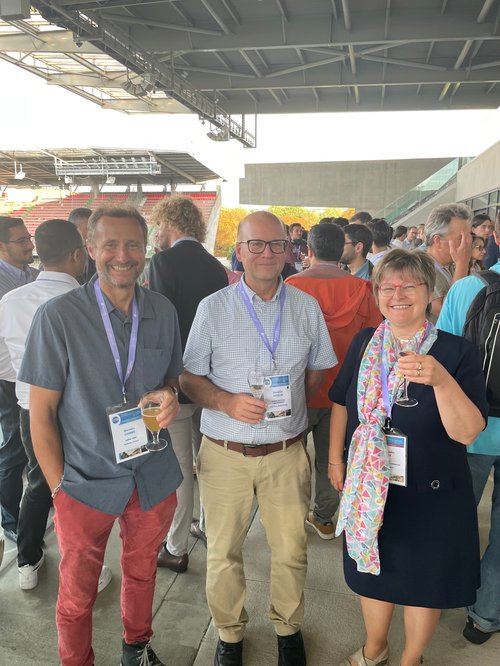
Number of participants from each country
| Country | Participants |
|---|---|
| France | 18 |
| Germany | 10 |
| United States | 8 |
| Belgium | 2 |
| Poland | 2 |
| Italy | 1 |
| Netherlands | 1 |
| Spain | 1 |
| Israel | 1 |
| United Kingdom | 1 |
| Total | 45 |
